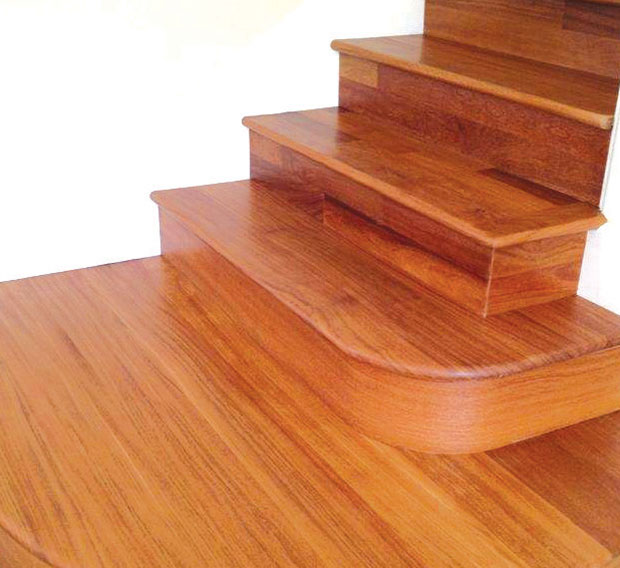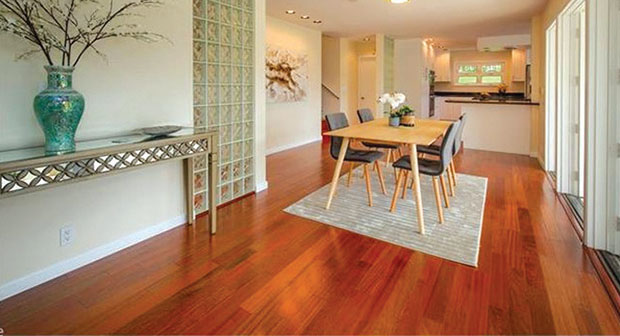If you have ever considered getting hardwood flooring for your home, the first thing you need to know is that there is a lot to know. Before you spend a penny on new flooring, you owe it to yourself to do some homework and look into the various forms available in today’s market. Get to know the pros and the cons of each type and what would be the best use of your investment dollars.
We will start with wood flooring. Even within this single category, there are many different types available to consumers and they each have very different characteristics with regard to form, installation requirements and cost. Even with the over-whelming popularity of vinyl, you might be surprised that you can get a wood floor for not much more money than you planned to spend.
The most basic wood flooring is unfinished solid. This is a three-quarter-inch-thick piece of wood, which comes in various widths and has been milled into flooring with a tongue and groove on the sides so that the boards can nicely sit together on your floor. The boards are acclimated, installed, then sanded and finished in your home. This is the most traditional wood flooring that can be found, and it takes a lot of skill and care to install properly. Due to the extra step of finishing the product on-site, it is one of the most costly options.
The next style is pre-finished solid. Identical in dimensional characteristics to unfinished, the main difference is that all the sanding and finishing has been done in a factory. The wood just needs to be glued or nailed in and no further processing is necessary. Many of these floors feature aluminum oxide, ultraviolet curing and multiple coats of finish, which give them a durability that cannot be achieved by manually finishing on-site.
The third major style is engineered wood flooring. This innovation in wood flooring consists of a top-wear layer of the actual wood species installed onto a multi-ply base. While solid wood flooring is especially sensitive to moisture, the crisscross design of the substrate for engineered floors gives them dimensional stability, which often allows for floating installation. This makes installation cost nearly the same as putting in a vinyl floor. Top layers can vary greatly from the thickness of card-stock to half the thickness of the floor and ply layers can range from as few as two or three plies, up to about nine.
A common misconception is that the thin layer of wood on the top is made that way to be cheap or give you an economy product. This could be true but the real purpose goes far beyond this. Did you know that too thick a top layer is not good either?
Want to learn more? Please visit the Kahala Pacific Floors showroom and sign up for the upcoming Great Flooring 101 webinar at 10 a.m. Saturday, June 12. All attendees will receive a free gift, so call 808-847-7711 to register or email sales@piiwood.com. See you online.
KAHALA PACIFIC FLOORS
CONTACT 808-847-7711
See more articles from: Kahala Floors

